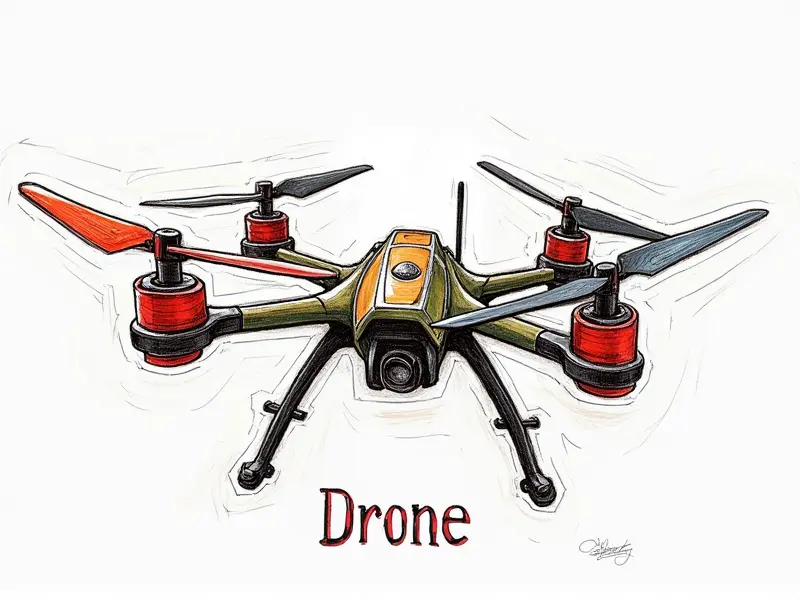How hot can li-ion batteries get?

Lithium-ion (Li-Ion) batteries are essential components in a variety of electronic devices, including drones and remote-controlled (RC) aircraft. These high-energy density batteries power these devices with efficiency and reliability, but they also pose significant safety concerns if not managed properly. In this article, we will explore the critical temperatures at which Li-Ion batteries can get hot, the safe operating temperature ranges for RC battery packs, and strategies to prevent overheating.
How Hot Can Li-Ion Batteries Get in Drones?
The maximum temperature a lithium-ion battery can reach varies based on the specific chemistry of the cells. In drones, these batteries typically operate between 10°C (50°F) and 45°C (113°F). However, under extreme conditions or during high-intensity use, temperatures can rise above this range.
When a Li-Ion battery overheats in a drone, it may exceed the optimal temperature of around 60°C (140°F), leading to reduced performance and potential safety hazards. If not addressed promptly, further heating could result in thermal runaway, causing catastrophic failure or fire.
Safe Operating Temp for RC Battery Packs
The safe operating temperature range for lithium-ion battery packs used in RC devices is generally between 0°C (32°F) and 45°C (113°F). Outside this range, the performance of the batteries can deteriorate rapidly. For instance, temperatures below freezing may cause a significant drop in discharge capacity and increase internal resistance.
Similarly, operating above 45°C can lead to accelerated aging of the battery cells, reduced cycle life, and increased risk of thermal events such as venting or fire.
Avoiding Li-Ion Battery Fires in Flight
To prevent fires caused by overheating lithium-ion batteries during flight operations:
- Ensure proper ventilation around the battery pack to allow heat dissipation.
- Monitor battery temperature and voltage using a reliable monitoring system.
- Avoid overcharging or discharging the battery beyond its recommended limits.
- Select high-quality batteries from reputable manufacturers with built-in safety features like thermal fuses and current limiting circuits.
Li-Ion Battery Safety: Heat Risks Revealed
Lithium-ion batteries are susceptible to several heat-related risks:
- Ventilation Failure: Poor airflow can lead to overheating, causing the battery to vent flammable gases and potentially ignite.
- Overcharging: Excessive charging voltage or current can cause thermal runaway, leading to fire or explosion.
- Physical Damage: Dents, punctures, or sharp impacts can damage the internal structure of the battery, causing short circuits and overheating.
Prevent Overheating in Your RC Battery Pack
To prevent overheating in your RC battery pack:
- Use Quality Chargers: Ensure that chargers are compatible with the battery type and do not exceed recommended charging rates.
- Monitor Temperature: Use temperature sensors or built-in monitoring systems to track battery heat during operation.
- Avoid Extreme Conditions: Do not expose batteries to direct sunlight, freezing temperatures, or high humidity levels.
Critical Temp for LiPo vs Li-Ion Drones
The critical temperature range for lithium-ion (Li-Ion) and lithium-polymer (Li-Po) battery packs used in drones is similar. Both types should operate within the same optimal range of 10°C to 45°C. However, LiPo batteries are more prone to swelling at higher temperatures due to their flexible casing.
For both Li-Ion and Li-Po cells, thermal runaway typically occurs around 80-90°C (176-194°F), leading to rapid temperature increases and potential fire hazards. It is crucial to implement safety measures to prevent reaching this critical threshold.
Managing Heat in Li-Ion Batteries for RC Aircraft Safety
To manage heat effectively in lithium-ion batteries used in RC aircraft:
- Cooling Systems: Integrate cooling fans or liquid cooling systems to maintain optimal battery temperature.
- Temperature Monitoring: Use real-time monitoring tools to detect and respond to rising temperatures promptly.
- Battery Placement: Position the battery in a location with adequate airflow, away from heat sources such as motors or ESCs.
Optimal Temp Range for Li-Ion Batteries in FPV Racing
In the high-intensity environment of first-person view (FPV) racing, lithium-ion batteries must perform optimally under varying conditions. The optimal temperature range remains between 10°C and 45°C to ensure peak performance.
However, due to rapid discharge rates and frequent flights in FPV racing, maintaining this temperature range requires active cooling solutions like heat sinks or dedicated cooling systems.
Safe Operating Temp for Li-Ion Batteries in RC Helis
For remote-controlled helicopters (RC helis), the safe operating temperature range for lithium-ion batteries is also 10°C to 45°C. Given that helis often operate at high altitudes and in cold environments, it’s essential to protect batteries from extreme temperatures.
Safety measures such as insulation or external heating elements can be employed to maintain optimal battery performance under varying conditions.
Avoiding Overheating with Li-Ion Batteries in RC Planes
To avoid overheating in lithium-ion batteries used in remote-controlled planes:
- Proper Ventilation: Ensure the plane's design allows for adequate airflow around the battery pack.
- Battery Monitoring: Implement a reliable monitoring system to track temperature and voltage during flight.
- Charge Management: Use compatible chargers that adhere to recommended charging rates and avoid overcharging or undercharging.
Preventing Thermal Runaway in RC Drone Li-Ion Cells
To prevent thermal runaway in lithium-ion cells used in remote-controlled drones:
- Battery Quality: Select high-quality batteries with built-in safety features like thermal fuses and overcharge protection.
- Ventilation: Ensure proper ventilation to dissipate heat generated during operation.
- Maintenance: Regularly inspect and maintain the battery pack, replacing damaged or degraded cells promptly.
Conclusion
Lithium-ion batteries are critical components in remote-controlled aircraft, drones, and FPV racing devices. Proper management of these batteries is essential to ensure optimal performance and safety. By understanding the temperature ranges and implementing appropriate cooling solutions, users can prevent overheating and thermal runaway, ensuring safe and reliable operation.

